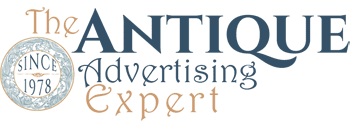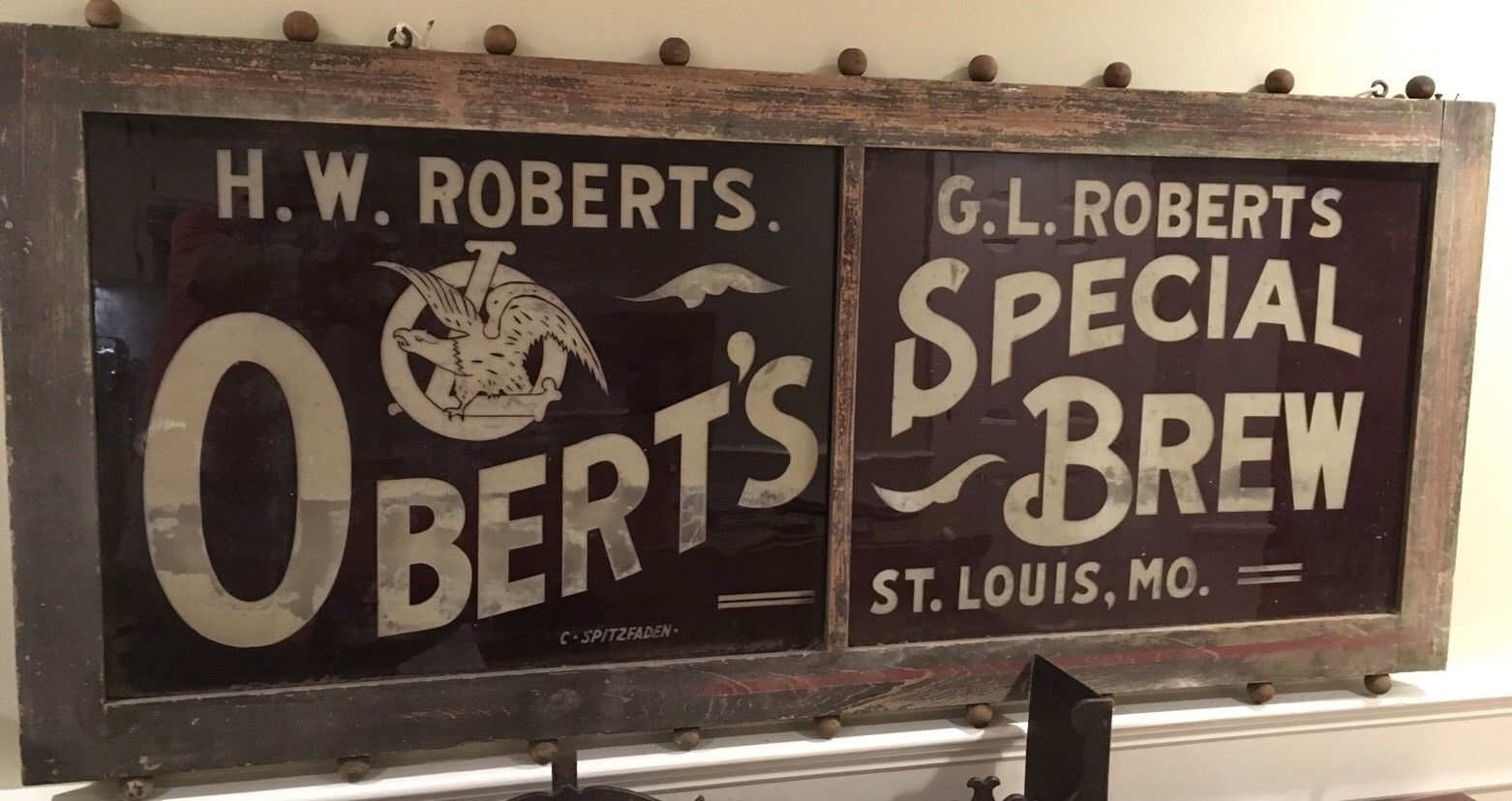A recent “big” find for me is this transom window sign from the Louis Obert Brewing Company which was based in St. Louis, MO before Prohibition. Transom signs were commonly displayed over the entrance of many 1900 era saloons. Taverns built in the late 1800’s and early 1900’s often had an entrance with a small corner of the buildings edge cut out, allowing a simple step or two up into the doorway of the tavern. If you look at old photos from this era, there were often two identical glass signs hanging from the edge of the building to a metal pole in the center. These signs were used to advertise a specific beer, and were typically made of glass with reverse on glass advertising on the signs.
The recent discovery of the pictured Louis Obert Breweries transom sign advertises their “Special Brew” brand of beer. This sign has beveled lettering in the glass, and was made by C. Spitzsfaden, a local sign maker in early St. Louis history. The sign also features the famous Obert Eagle design, which was very similar in style to the neighboring Anheuser-Busch eagle design. If you look closely, you will see the L-O design around the eagle, which were the initials of the breweries namesake, Louis Obert. By comparison, the Anheuser-Busch eagle logos of the period were surrounded by the letters A-B which were that breweries initials also.
This sign still has the original fancy wood frame on it, with tiny small wooden marble size balls on the edges of the frames top and bottom edges. You can also see the original red and green paint faintly on the wood, which outlined the sign a bit more. The sign is 68 inches long from end to end. The names of the two owners (H.W. Roberts & G.L. Roberts) of the saloon where this sign originally hung are also featured on the top edge of the sign. The small photograph inserted shows a different variation of the Louis Obert Brewing Companies use of a large reverse on glass sign outside a saloon in the St. Louis, MO area.
When this sign was rescued from a barn in North Carolina, the second sign which would have hung with this one was also found. Unfortunately, the left glass frame had been broken years ago, and only the right side panel remained. With some creative woodwork, the original owner reframed the right side of the glass in a smaller frame, and it now rests in a local St. Louis collection also. Upon further inquiry, I learned the N.C. family farm where these signs were found was owned by a family who were originally from St. Louis, and who were also related to the Roberts Family which owned the saloon where these signs hung.

